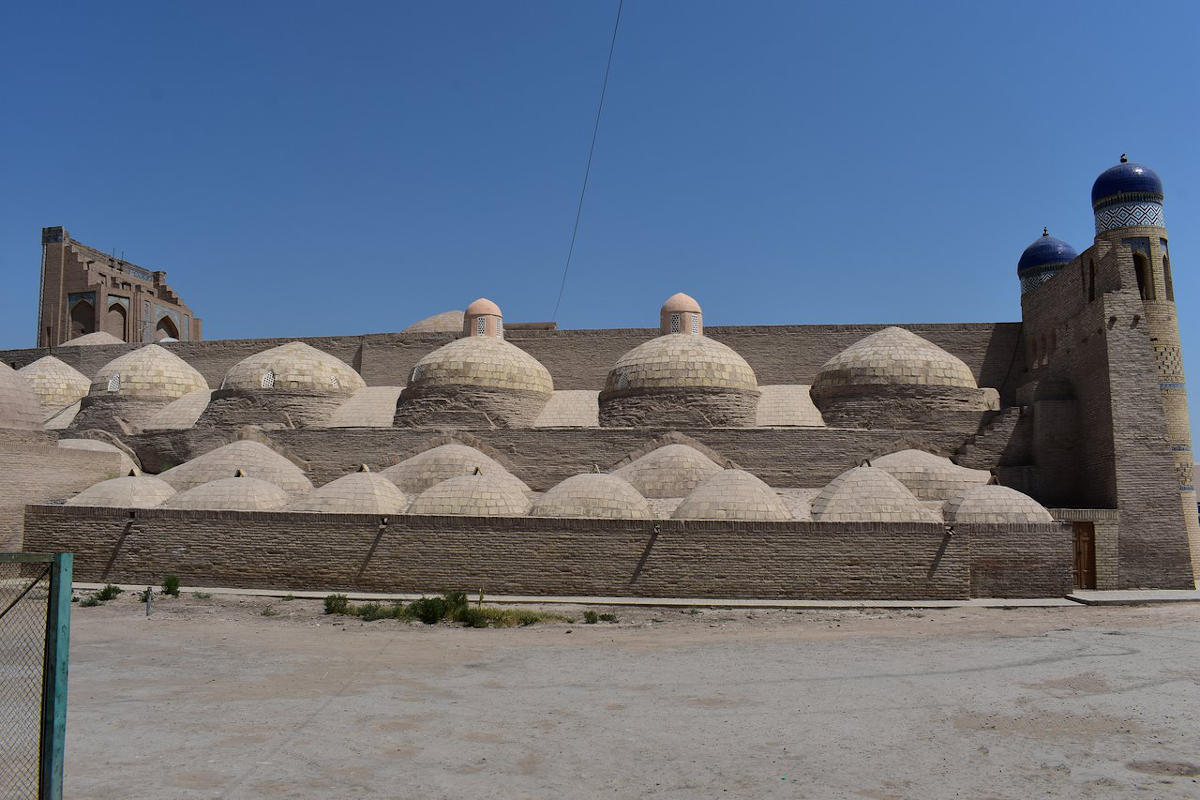Khiva - Anush Khan Bathhouses

The hammams of Khiva – a masterpiece of oriental bathing culture
The hammams of Khiva, in particular the Anush Khan bathhouses, are among the most important architectural testimonies to the historical bathing culture of Central Asia. They are part of a deeply rooted tradition of technological, volumetric-spatial and planning design and occupy an outstanding position in the architectural history of the city. As the earliest known monument of this type in Khiva, they are of inestimable value for the study of civil architecture in the region and bear witness to a remarkable technical and cultural heritage.
History and significance
The hammams were built during the reign of Abu al-Ghazi Bahadur Khan in 1657 and are still the oldest surviving baths of this type in Khiva. According to historical sources, Abu al-Ghazi Bahadur Khan had them built in honour of his son Anush Khan. These bathhouses are typical examples of oriental bathing facilities from the Middle Ages, whose architectural design was based on tried and tested principles. The hammams were not only used for personal hygiene, but were also a social meeting place where the population could socialise and relax.
Architectural design and functionality
The construction of the bathhouses followed a sophisticated principle of thermal insulation and temperature regulation. They consisted of several functionally divided areas, including an anteroom, changing rooms and washrooms at different temperatures, which were heated according to a sophisticated system. A sequence of rooms, in which the temperature gradually increased, led to the central washroom, where the actual cleaning took place. Surrounding this main room were several smaller side rooms with different functions, including relaxation rooms and massage rooms.
A remarkable feature of the Anush Khan bathhouses was their semi-subterranean heating system, which allowed heat to be stored efficiently. The hammam was heated via an underground duct system that channelled hot flue gases under the floor. This not only heated the floor, but also ensured an even room temperature. Water was also drawn from a nearby well, which was located directly next to the boiler room.
The bathhouses had an exceptionally advanced heating and waste water system for the time, which ensured hygienic use of the facility. The water was collected in special basins and provided at different temperatures so that visitors could switch from a cooler to a warmer area. The hot steam generated by the heating system ensured an even level of humidity, which enhanced the cleansing effect of the baths.
Architectural features and urban integration
The remains of this extraordinary building can still be seen today in the historic centre of Khiva, Ichan-Kala. The hammams are partly underground, so that their existence is only visible through the domes that rise above the ground. This architectural solution not only served to regulate the temperature, but also contributed to the harmonious integration of the building into the urban structure. The domes also had a special function in terms of ventilation and served as light sources, as daylight entered through their small openings without allowing the heat to escape.
The interior design of the bathhouses was rather simple, but functionally well thought out. The walls and vaults were covered with water-repellent plaster, which not only ensured a pleasant indoor climate but also made cleaning easier. Some remains of elaborate mosaics and calligraphic inscriptions indicate that the hammams were once decorated with elaborate ornaments that have faded over time.
Significance in the present day
Today, the hammams of Khiva are an important cultural heritage and a fascinating example of the highly developed engineering skills and understanding of hygiene of the time. Archaeologists and historians continue to research the exact functioning and significance of these bathhouses in medieval Khiva society. Some sections of the hammams have been restored and are open to visitors to give them an insight into the bathing culture of past centuries.
The Anush Khan bathhouses are not only an architectural monument, but also a testimony to the way of life and social structures of past times. They illustrate that hygiene, health and communal living played a central role in the Islamic world from early times. Visitors to the city of Khiva should not miss the opportunity to explore this impressive building and be inspired by the fascinating architecture and history of oriental bathing culture.
